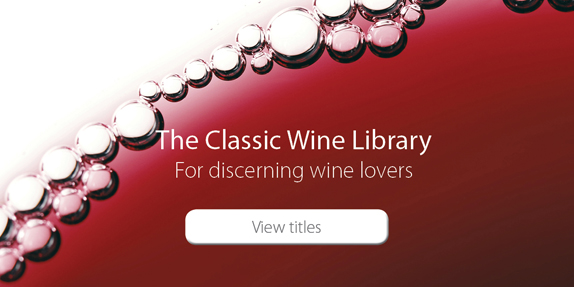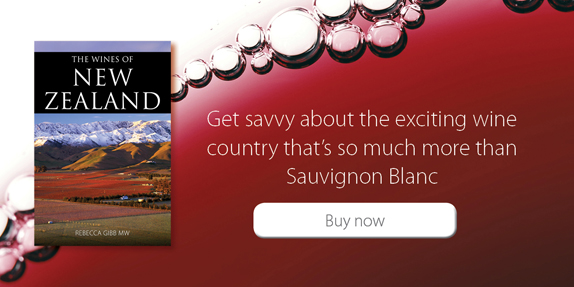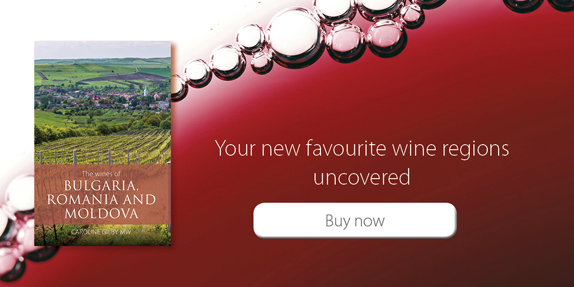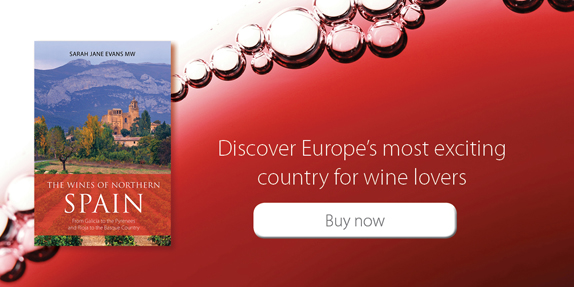Author Archives: Rebecca
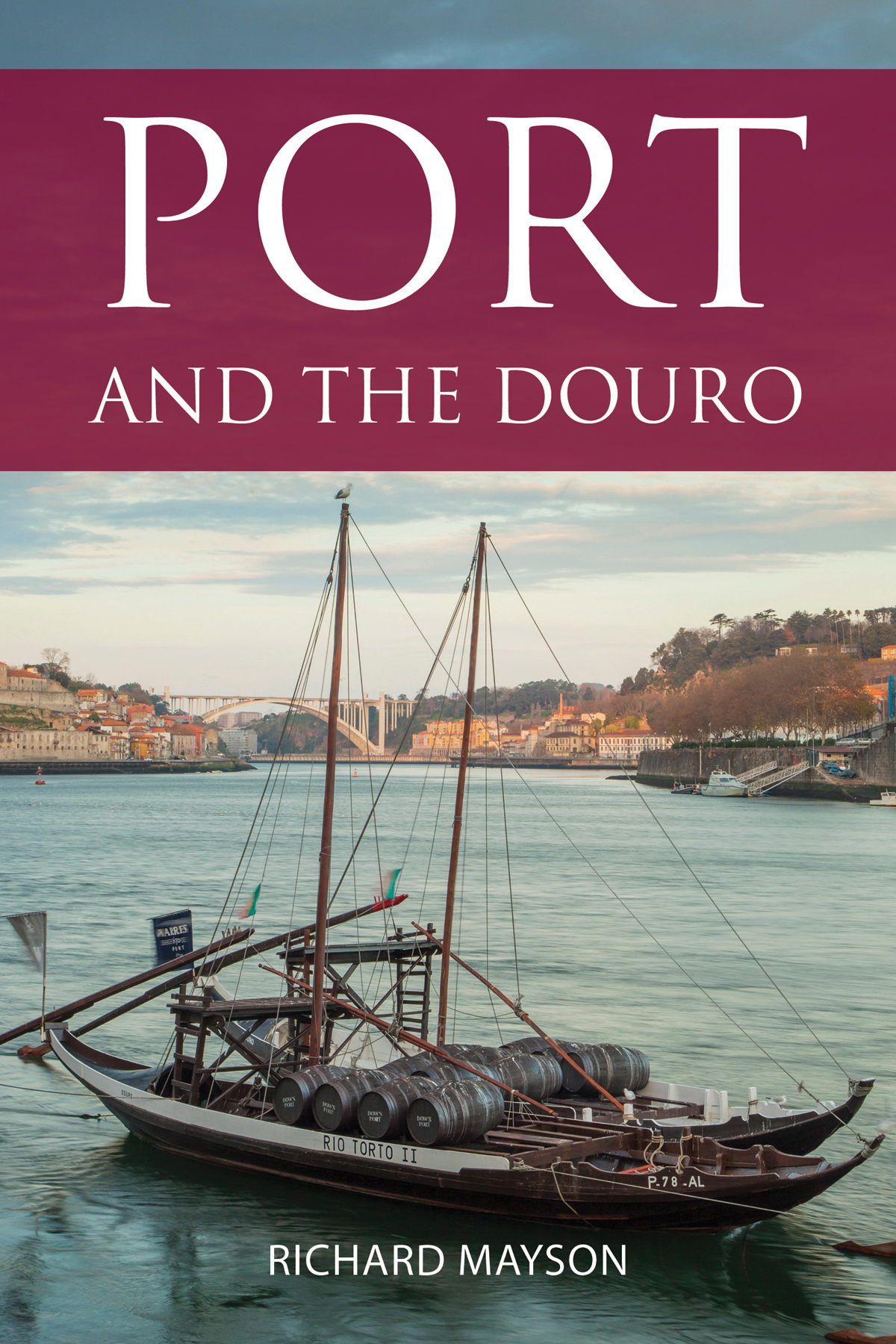
Port and the Douro – fourth edition coming soon
5 October 2018 by Rebecca in Classic Wine Library, Wine and spirits
It’s ‘the only book on Port and the Douro worth having’ and this November Infinite Ideas will be publishing the fourth edition of Richard Mayson’s classic book. Port and the Douro is a hugely readable combination of facts, expert opinion and anecdotes about prominent figures and events in the Port trade (as well as notes on the dwindling popularity of Port and lemon on Coronation Street).
A full reassessment of every quinta and shipper takes account of recent changes in fortune and ownership. The growth in Douro wines has led to a substantial rewrite of this chapter. In fact so exciting is this region that many of the makers of Douro wines now need to be given more space in Richard’s forthcoming The wines of Portugal (due out next September). Vintages are examined in detail from 1960 all the way up to the as-yet-undeclared 2017, which – spoiler alert – despite unpredictable weather, an early harvest and reduced yields may not be anything like the disaster some have predicted. Recent tastings have also allowed a re-evaluation of some vintages.
For anybody interested in the most up-to-date information on perhaps the most popular of fortified wines, this must-have book will be available in all the usual places from 19 November.
p.s. The bargain hunters among you may be interested to know that we do still have a few copies of the third edition of Port and the Douro left and we’re offering these at a promotional price of £15 while stocks last.

James Tidwell MS joins Classic Wine Library
21 September 2018 by Rebecca in Book publishing, Classic Wine Library, Wine and spirits
James Tidwell MS has joined the editorial board of the Classic Wine Library series, published by independent Oxford publisher Infinite Ideas. Tidwell, a Master Sommelier who co-founded the TEXSOM Conference, now in its fourteenth year, is a writer, speaker, consultant and entrepreneur who is expert in the worlds of wine, tea and sake. He joins current board members Sarah Jane Evans MW and Richard Mayson in working on the growing series.
Based in the USA, Tidwell will have a particular role in expanding the North American wine regions covered by the series and in increasing awareness of the Classic Wine Library among his countrymen. Joining the board James said, “This is my most treasured series, from the original Faber & Faber books to Infinite Ideas. I am thrilled to see the continuation and revitalization of the series, and am happy to be included.” The nineteenth title in the series, Anthony Rose’s Sake and the wines of Japan is published this October, along with the fourth edition of Richard Mayson’s own bestseller, Port and the Douro. Sarah Jane Evans MW was excited to be working with Tidwell, saying, “James’ knowledge is international and he brings status in the US wine community, knowledge of the current world of wine, and specifically of North American authors and the market.”
For further information on The Classic Wine Library please contact the Publisher, Richard Burton: richard@infideas.com; +44 (0)7802 443957
About James Tidwell
James Tidwell, Master Sommelier, is a writer, speaker, consultant and entrepreneur. After passing the Master Sommelier examination in 2009, he earned his Diploma from the Wine and Spirits Education Trust (WSET); Certified Wine Educator (CWE) from the Society of Wine Educators; Certified Tea Specialist from the Specialty Tea Institute, and Certified Sake Professional from the Sake Education Council. Tidwell holds a baccalaureate degree in International Trade and Finance from Louisiana State University, and earned Honours upon graduating from the Culinary Institute of America.
Tidwell co-founded the TEXSOM Conference with fellow Master Sommelier Drew Hendricks. Now in its fourteenth year, TEXSOM is the premier professional beverage education conference in the United States and among the most influential in the world. He is also Co-Owner and Producer of the TEXSOM International Wine Awards, one of America’s largest and most respected wine competitions. His writing has appeared in World of Fine Wine, Lonely Planet, Celebrated Living and The Dallas Morning News.
His industry leadership has included service on Boards of Directors and Advisory Boards for the Court of Master Sommeliers – Americas, GuildSomm, the Society of Wine Educators, the Specialty Tea Institute and the Wine and Food Foundation of Texas. He is consulting Master Sommelier with Four Seasons Hotels and Resorts in Las Colinas, Texas, which earned a Wine Spectator Best of Award of Excellence and five nominations for a James Beard Foundation Award for Outstanding Beverage Program under his direction.
Think you know New Zealand wine? Prepare to be surprised
24 July 2018 by Rebecca in Classic Wine Library, Lifestyle, Wine and spirits
Most regular wine drinkers will be familiar with Sauvignon Blanc from Marlborough, and red wine lovers may well have sampled one of the South Island’s Pinot Noirs. But how many of us have explored beyond that? New Zealand is a relatively new wine country, whose modern industry is only around 40 years old but in that time huge changes have taken place and there is now an extraordinary variety of wines coming out of these two islands.
During this century exports have increased from 19.2 million to 253 million litres, so the country’s wines are clearly popular. As the industry approaches middle age it needs to keep on its toes – the fickleness of fashion means that producers cannot rely on the continuing popularity of New Zealand ‘Savvy’. So now seems a good time to take stock. In a new book, The wines of New Zealand, master of wine Rebecca Gibb expertly takes readers through the past, present and future of New Zealand wine. Gibb notes that, “New Zealand wine has reached its early adulthood with new faces, new varieties and innovative new methods appearing at breakneck speed, and there is so much more to come. The national industry and all its many components are constantly adjusting in the vineyard, the winery and the global marketplace.”
Gibb confesses that she is “known to get excited about wine,” and that excitement proves infectious here. She guides us energetically through the history of New Zealand wine, employing a genial style that makes even the section on climate entertaining, without taking away any of its authority. Her chapter covering the grape varieties is far more than just a study of cultivars – as an MW student Gibb was awarded the Bollinger Medal for her outstanding tasting skills, and her keen abilities are put to use here in her descriptions of the flavours involved, while each of the major varieties gets its own fascinating biography, rounded off with a top 10 of ‘must try’ wines.
Gibb then takes each of the 10 main regions in turn, starting with Northland, moving southward through Hawkes Bay and Marlborough to end in the South Island at Central Otago. At last count there were 670 producers so rather than turn the book into a directory, Gibb provides a selection of producer biographies featuring the most exciting, innovative and visitor friendly winemakers, along with details on which wines to try. If Gibb’s enthusiasm has you booking a flight, the final chapter will prove invaluable, packed as it is with suggestions on wine-related places to stay and things to do. All in all the book is an invaluable resource for anyone keen to adventure beyond Sauvignon Blanc.
About the author
Rebecca Gibb MW is an award-winning wine journalist and editor. Securing her first editorial role at UK wine trade magazine Harpers after being named UK Young Wine Writer of the Year in 2006, she has since edited several print and online publications. Rebecca contributes to prestigious titles including Decanter, The World of Fine Wine, LUX and Wine Business International, in addition to running a small business, The Drinks Project.
In 2015, Rebecca became a Master of Wine. Having lived in New Zealand from 2010 to 2016 with her Kiwi husband and son, Rebecca recently returned to the UK. She maintains her strong ties with the people and wines of Aotearoa.
The wines of New Zealand is published on 30 July 2018. Review copies available from marketing@infideas.com
Holiday inspiration from The Classic Wine Library
16 July 2018 by Rebecca in Lifestyle, Wine and spirits
We asked our authors to recommend some wine-based trips and activities. Here’s what they came up with.
Caroline Gilby MW, The wines of Bulgaria, Romania and Moldova
“The Melnik Wine Routes map is available from the tourist office and some tour companies, and a Facebook page details all the producers open for visits and wine tastings. It also shows the location of key tourist destinations such as the dramatic Melnik sand pyramids, the Kordopulov house, the town of Melnik itself and historic sites at Sandanski and Heraclea-Sintica. The region also organizes joint events such as open cellars around the feast of St Trifon Zarezan, working with social media and tourism agencies to bring visitors.”
Rebecca Gibb MW, The wines of New Zealand
“Want to stay on a vineyard? Marlborough’s country casual Hans Herzog cottage is highly recommended, The Bell Tower offers luxury bed and breakfast accommodation at Dog Point vineyard and St Leonards has a number of restored cottages with little extras including a swimming pool, grass tennis court, bicycles, and chickens laying fresh eggs for breakfast.”
Konstantinos Lazarakis MW, The wines of Greece
“The Attican Vineyards Wine Producers’ Association set up the Wine Road of Attica to promote wine tourism in the region, which is close to Greece’s capital, Athens. A must visit on the Wine Road is Ktima Papagiannakos, with its beautiful bioclimatic winery. It’s also so close to the airport that you could even squeeze it in between flights.”
Michael Garner, Amarone and the fine wines of Verona
“Take a trip off the beaten track in Valpolicella, to Tenuta Santa Maria Valverde, the winery on the cover of the book. Just 10,000 bottles are produced from the terraced vineyards, located at up to 500 metres altitude. For those fit enough, the best way to approach is by bicycle – the winery is also an accredited bike station where cyclists can rest and carry out minor repairs.”
Richard Mayson, Port and the Douro
“For a true appreciation of the grandeur of the Douro scenery the train journey from Oporto to Pocinho is not to be missed. During the four-hour journey the train snakes alongside the river through countryside so rugged that neither mule nor motor vehicle could gain access. For a shorter trip alight at Pinhão and take in the impressive scenery and the many famous port quintas within walking distance.”
Raymond Blake, Côte d’Or
“Beaune is the best place to base yourself for a visit to the Côte d’Or. The Hotel Le Cep is a gem for wine lovers, with a new tasting cellar opened in July 2017. And do not miss the Athenaeum book, wine and wine accessories shop. Standing opposite the entrance to the Hôtel Dieu, it stocks a superb selection of wine books, glassware, maps, souvenirs and a reasonable number of wines.”
Stephen Brook, The wines of Austria
“When in Vienna don’t miss a trip to a traditional Heurige, an inn serving wine grown and vinified by the owners. Only cold food is served and a pine branch is hung over the door of any Heurige open for business. Be careful to avoid the fake Heurigen, set up to cater to the demands of mass tourism, and head instead to Fuhrgassl-Huber in Neustift to sample Thomas Huber’s Rieslings, Grüner Veltliners and Traminers.”
Nicholas Faith, The story of Champagne
“A day trip to Champagne is easily built into a Parisian holiday, since it is only an hour away. Although some houses still eschew the ‘theatre of champagne’, only welcoming professional visitors, buyers and journalist, many others now run tours, including Moët, Canard-Duchêne, Drappier and Château Thierry Pannier, which offer tours of the thirteenth-century cellars, and Lanson, which includes a trip to vineyards in Reims.”
Sarah Jane Evans MW, The wines of northern Spain
“The first weekend in August sees the Festa do Albariño in Cambados, located in Galicia in the far north-west of Spain. This jolly affair offers plenty of Albariño to drink from producers’ stalls, fireworks and partying through the night. (If you are staying at the Parador de Cambados and want to go to sleep before 4 a.m., book a room that is far from the fair! I speak from bitter experience.)”
Rosemary George MW,
“Balades vigneronnes combine an opportunity to walk and taste in the format of a meal. You walk a kilometre and reach your aperitif stop, with an appropriate amuse-bouche, and some wines to taste and enjoy with it, before walking to the next course, with more wines to taste. Each grower who wishes to participate mans a barrel. Try the Pic St Loup, Terrasses du Larzac or La Clape walks.”
‘Whatever happened to Bulgaria?’ The rise and fall and rise of Eastern Europe’s wines
11 July 2018 by Rebecca in Classic Wine Library, Wine and spirits
There was a time, back in the eighties and nineties, when Bulgarian wines found many fans among those who wanted to match the reach of their palates to the limits of their pockets. But then something changed and those cherished bottles started disappearing from supermarket shelves.
The cause was a fall in quality due to the complicated land-restoration process following the fall of communism. A lack of empathy between wine producers and grape growers – many of whom were inexperienced in farming vines – caused a crisis in the industry, since most wineries did not grow their own grapes. At the same time key markets like the UK saw a huge influx of quality, affordable wines from the likes of Australia and the Americas. Romania, which had recently begun exporting to the West, suffered too as its signature Pinot Noirs found it difficult to compete with those coming out of countries like New Zealand. Romania’s neighbour Moldova had never been an exporter to the West but when its main market, Russia, brought in a ban on Moldovan wines it faced the possibility of an economic catastrophe. All three countries had to drastically change their approach to growing, creating and selling wine.
Now, as a new book by Eastern Europe wine expert Caroline Gilby MW demonstrates, these countries are finding a place on the shelves of wine sellers in the US, UK and other northern European countries. In The wines of Bulgaria, Romania and Moldova Gilby demonstrates an obvious excitement at seeing the rise in popularity of these wines: ‘I am passionate that Eastern Europe is the last undiscovered treasure trove of the wine world,’ she says.
As somebody who has been involved first in selling and then in consulting for Eastern European wine for three decades Gilby is particularly proud to see the results of this wine revolution, putting the success down to today’s wines being artisan, affordable and authentic. This is in stark contrast to the wines of the past: ‘Each country has emerged with a clear and distinctive identity,’ she says. ‘The change has been a complete revolution from communist, mass-market, wine-based alcoholic beverage, to today’s industries where an exciting raft of small producers has added interest and individuality and pushed quality forward.’
Although there are similarities between the experiences of Bulgaria, Romania and Moldova there are also distinct differences. The book tackles each country’s story in turn, examining the unique histories, geography, grape varieties and wine producers that have formed the three wine industries we see today. For wine lovers interested in discovering new wines that rival any in Western Europe or the New World this is an essential guide.
About the author
Caroline Gilby MW joined Augustus Barnett as a trainee wine buyer in 1988, working for them for seven years and becoming an MW in 1992. Since 1995 Caroline has provided wine consultancy to a range of clients, from major international PLCs to small boutique wineries. A member of the Circle of Wine Writers, Caroline contributes to magazines including Decanter, Harpers, Revija Vino and Meininger’s Wine Business International. She also writes for Hugh Johnson’s Pocket Wine Book and has contributed to several other wine guides. Caroline judges regularly at international wine competitions and is the Decanter World Wine Awards joint regional chair for North, Central & Eastern Europe. She has been President of the Vinistra Wine competition since 2014 and frequently judges in Eastern Europe.
Review copies available from marketing@infideas.com
A taste of excitement: why northern Spain is currently the place to get your wine kicks
4 May 2018 by Rebecca in Classic Wine Library, Wine and spirits
Spain is one of the world’s largest wine-producing countries. Over recent years the level of quality in wines has risen sharply and many neglected wine regions are finding new life on the world stage. Within the lifetime of many of today’s wine drinkers Spain has seen huge political, cultural and social changes, and these have had a positive effect on its wine industry.
Beyond the well known favourites of Rioja and the Tempranillo grape there is now a world of wine waiting to be discovered. So where should one begin the journey, what might we expect to find and who are the people behind these wines? So much is there to discover that the northern part of the country now merits an entire book in itself, The wines of northern Spain. In it, award-winning Spanish wine specialist Sarah Jane Evans MW delves into what she refers to as ‘the most exciting country in Europe for wine lovers’.
Perhaps the main thing that makes the country so exciting for the wine adventurer is the sheer variety on offer, for as Evans points out, ‘It is home to the new reds, the fresh, zesty Atlantic styles; the aromatic whites; the pale-coloured rosados; the traditional method sparklings; the sweet Moscatels; the wines aged under flor; and the wines from vines grown on slate, clay, limestone or sand, all expressing their origins.’
Across the regions producers are demonstrating confidence in their vinous roots and making a return to traditional varieties such as Garnacha, proving that with care in the vineyard and winery it can produce superb wines. And the northern half of Spain is also impressing with white wines that are not only pure but as sophisticated and intriguing as their red counterparts.
Evans also explores the more controversial issues, tackling the question of oak overuse and the winemakers’ efforts to create wines more suited to tastes beyond the local market, as well as addressing Spain’s history as a producer of bulk, rather than quality, wine. She also looks at current wine regulations, offering some thoughts on the way forward for the regions featured.
Clearly, attempting to include all of the area’s wine producers is not possible, so instead Evans focuses on those producers she feels are doing the most exciting work in field and cellar, and producing distinctive wines with a sense of place. She points out that the best way to understand the Spanish wine revolution is to try the wines for ourselves, and notes that while many of these wines are available outside Spain the best place to experience them is in their place of origin, alongside local food and among Spanish people. To aid our explorations she supplies a listing of some of her favourite restaurants and places to stay.
Whether or not you choose to pay a visit to the country The wines of northern Spain is the ideal gateway for all wishing to find out more about the wines of this rapidly evolving region.
Review copies available from marketing@infideas.com

